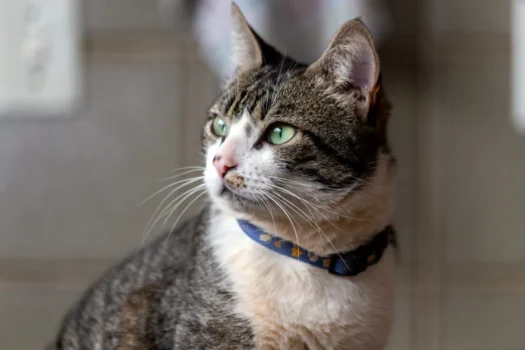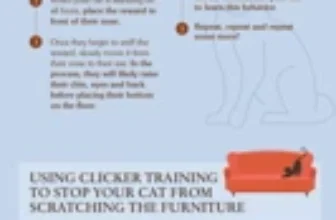Welcoming a new pet into your home can be an exciting experience, but it comes with its own set of challenges. One of the most important things you need to teach your new American Wirehair is how to use the litter box. Litter training can be a daunting task, but it’s a crucial part of your cat’s daily routine. Using positive reinforcement during this process can make it easier for your cat to learn and establish a positive habit. In this article, we’ll explore the benefits of positive reinforcement during litter training, how to prepare for the process, effective techniques to reinforce positive behavior, common mistakes to avoid and troubleshooting tips to ensure success.
Why Use Positive Reinforcement?
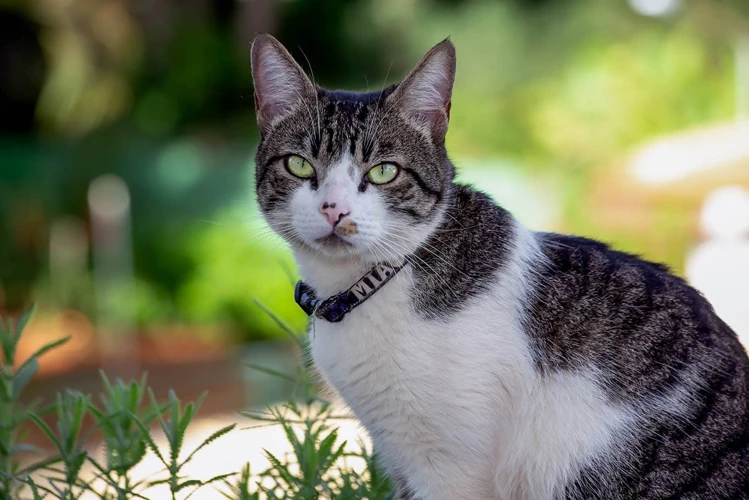
When it comes to litter training your American Wirehair kitten, positive reinforcement techniques are highly recommended. But why is it better than other methods of training? The answer lies in the many benefits of positive reinforcement. Not only can it lead to quicker learning, but it can also result in better behavior from your furry friend and stronger bonding between you both. So if you’re preparing to litter train your American Wirehair, here’s why positive reinforcement is the way to go. For more tips on litter training, check out these American Wirehair kitten litter training tips.
Quicker Learning
Using positive reinforcement during litter training your American Wirehair can result in quicker learning. Cats are intelligent animals, and using positive reinforcement helps them understand what you want them to do. By providing rewards for good behavior, such as using the litter box, your cat will associate good behavior with positive outcomes.
Positive reinforcement helps your American Wirehair understand what you want from them. When your cat uses the litter box correctly, reward them with a treat or praise. This positive experience helps your cat understand that using the litter box is a desirable behavior. As a result, this makes them more inclined to continue good behavior, leading to quicker learning.
One important thing to remember is that every cat is different and may learn at a different pace. Using a combination of positive reinforcement techniques can help speed up the learning process. Some techniques may work better for your cat than others, so don’t be afraid to experiment to find out which ones work best.
Additionally, consistently using positive reinforcement techniques encourages your cat to repeat the desired behavior more frequently. This leads to the formation of good habits, which can make litter training your American Wirehair more effective and quicker.
Using positive reinforcement techniques during litter training can help your American Wirehair learn quickly and make the training process more enjoyable for both you and your cat. By reinforcing positive behavior and rewarding good habits, you can develop a strong bond with your cat while also ensuring they understand where to do their business.
If you want to learn more about American Wirehair litter box behavior, [internal link] check out our article on understanding American Wirehair litter box behavior[/internal link]. For tips on choosing the right litter box, [internal link]take a look at our guide on the best litter box for American Wirehair cats[/internal link].
Better Behavior
Using positive reinforcement during litter training your American Wirehair can also lead to better behavior in your cat in general. When a cat is trained using positive reinforcement, they will associate good behavior with positive outcomes such as treats, praise, or playtime. This can encourage your cat to continue exhibiting good behavior even outside of litter training.
Benefits of Using Positive Reinforcement for Better Behavior:
- Less destructive behavior – When a cat is trained using positive reinforcement, they are less likely to exhibit destructive behavior such as scratching furniture or chewing on cords.
- More social behavior – Positive reinforcement techniques can help cats become more social and less fearful which leads to a stronger bond with their owners.
- Better litter box behavior – When a cat is trained using positive reinforcement techniques for litter training, they are more likely to exhibit good litter box behavior. This leads to less mess, odor, and easier maintenance of the litter box.
It’s important to note that using positive reinforcement doesn’t mean that your cat will become a perfect angel overnight. It takes time, consistency, and patience to see results. However, the benefits of training your American Wirehair using positive reinforcement extend beyond just litter training and can lead to better behavior overall.
If you are experiencing behavioral issues with your American Wirehair, it’s important to rule out any medical issues first. Consider taking your cat for a veterinary checkup before increasing training efforts. Additionally, understanding American Wirehair litter box behavior can help you make more informed choices in litter box training methods.
For more information on choosing the right litter box for your American Wirehair or understanding their litter box behavior, check out Best Litter Box for American Wirehair or Understanding American Wirehair Litter Box Behavior.
Strong Bonding
Positive reinforcement is not only an effective way to train your American Wirehair to use the litter box consistently, but it can also be a great way to build a strong bond between you and your feline friend. By using positive reinforcement techniques, you can communicate to your cat that using the litter box is an appropriate and desirable behavior, strengthening your relationship and trust.
One way to enhance the bond with your American Wirehair while training is to make sure you are fully present and engaged during the session. Sitting with your cat, talking to them in a calm and reassuring tone and providing physical affection, such as stroking or petting, can be an ideal way to build trust.
Another way to strengthen the bond with your feline friend is to use treats as rewards for their successful litter box usage. Treats such as small pieces of tuna or chicken can be an ideal way to show appreciation for good behavior, and by providing them consistently each time your cat uses the litter box successfully, you can help create a sense of security and comfort for them.
Additionally, using playtime to reward positive behavior during litter training can aid in building bonds with your American Wirehair. Using toys like a feather wand or a catnip ball can motivate them to use the litter box properly, while simultaneously enabling a fun and playful atmosphere.
By using positive reinforcement during litter training, you can create a harmonious environment for both you and your American Wirehair. A strong bond rooted in patience, positive reinforcement, and praise will foster long-term success that will bring joy to both you and your feline friend. Remember, creating positive experiences for your cat can go a long way in strengthening your relationship with them.
For more information on American Wirehair litter box training, check out our related articles: American Wirehair Litter Box, Clean American Wirehair Litter Box, American Wirehair Litter Problems, Transition American Wirehair Litter Box, and American Wirehair Toilet Training Pros and Cons.
Preparing for Litter Training
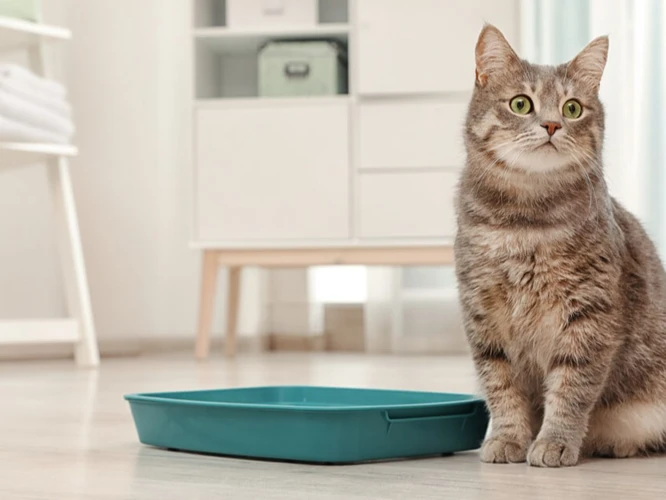
When preparing to litter train your American Wirehair, there are some crucial decisions you need to make first. These decisions will not only impact your cat’s ability to learn but will also affect their overall experience with using the litter box. To ensure success, it’s important to carefully consider the type of litter box, litter, and location you will be using. Let’s dive into the details of each decision to guarantee you make the right choices for your furry friend.
Choosing the Right Litter Box
When it comes to litter training your American Wirehair, choosing the right litter box is crucial. Here are some factors to consider:
- Size: Choose a litter box that is large enough for your cat to comfortably turn around in. If you have a kitten, keep in mind that they will grow quickly, so consider getting a larger litter box that they can grow into.
- Depth: The litter box should be deep enough to prevent litter from spilling out, but not so deep that your cat struggles to get in or out. A depth of around 5-6 inches is usually sufficient.
- Accessibility: Choose a litter box with low sides or a ramp to make it easy for your cat to enter and exit. If you have an older cat or a cat with mobility issues, consider a litter box with a lower entry point.
- Number: It’s recommended to have one litter box per cat, plus one extra. So, if you have two cats, you should have three litter boxes. This can help prevent territorial disputes and ensure that each cat has access to a litter box when they need it.
- Location: Place the litter box in a quiet, low-traffic area of your home. Cats prefer privacy when using the litter box, so consider placing it in a closet or behind a partition.
By taking these factors into consideration and choosing the right litter box, you can help ensure that your American Wirehair feels comfortable and secure while using the litter box.
Choosing the Right Litter
When it comes to choosing the right litter for your American Wirehair, there are several factors to consider. One of the first things to keep in mind is that cats have a natural instinct to bury their waste, so choosing a litter with good clumping abilities is essential. Here are some things to consider when selecting litter for your feline friend:
| Factor | Consideration |
|---|---|
| Type | There are several different types of litter available, including clay, silica gel, and biodegradable options. Clay litter is the most common and tends to be affordable, while silica gel litter is low-dust and good for odor control. Biodegradable litter options, such as those made from corn or recycled paper, can be eco-friendly choices. |
| Scent | While some litter products are scented, it is important to keep in mind that cats have sensitive noses and may not like strong smells. Unscented litter may be a better option, especially if your cat is sensitive to perfumes or other strong odors. |
| Texture | Some cats have preferences when it comes to the texture of their litter. Some may prefer a finer, sand-like texture, while others may prefer a coarser texture. Experimenting with different textures can help you find the best option for your cat. |
| Dust | Litter dust can be a concern for both cats and their owners. Some types of litter can be very dusty, which can be irritating to cats’ respiratory systems and make a mess in your home. Low-dust options or those specifically marked as low-tracking can be a good choice. |
| Absorbency | Cats can produce a lot of waste, so choosing a litter with good absorbency is important. Clumping abilities can help make waste removal easier, as can options with good odor control. |
By considering these factors and experimenting with different litter options, you can find the best product for your American Wirehair and make litter training a success. Remember to keep the litter box clean and fresh, and offer positive reinforcement when your cat uses it correctly.
Choosing the Right Location
When choosing the right location for your American Wirehair’s litter box, there are several things to consider.
Accessibility: Choose a location that is easily accessible and visible to your cat. Cats tend to prefer quiet and private locations, so avoid placing the litter box near loud appliances or in busy areas of the house.
Away from food and water: Cats are very clean animals and prefer to have their litter box away from their food and water bowls. It’s also important for their hygiene to avoid placing the litter box near where they eat.
Multiple boxes: If you have more than one cat, it’s important to have multiple litter boxes in different locations throughout your home. This not only helps prevent territorial issues but also gives your cats options and ensures that they always have access to a clean litter box.
Away from obstacles: Avoid placing the litter box near obstacles that can prevent your cat from comfortably using it. This includes walls, doors, and furniture.
Well-ventilated: A well-ventilated area will help reduce unpleasant odors and make the litter box more comfortable for your cat to use.
Remember, every cat is different, so it may take some trial and error to find the perfect location for your American Wirehair’s litter box. If your cat seems to be avoiding the litter box, try moving it to a new location or offering additional litter boxes.
Positive Reinforcement Techniques
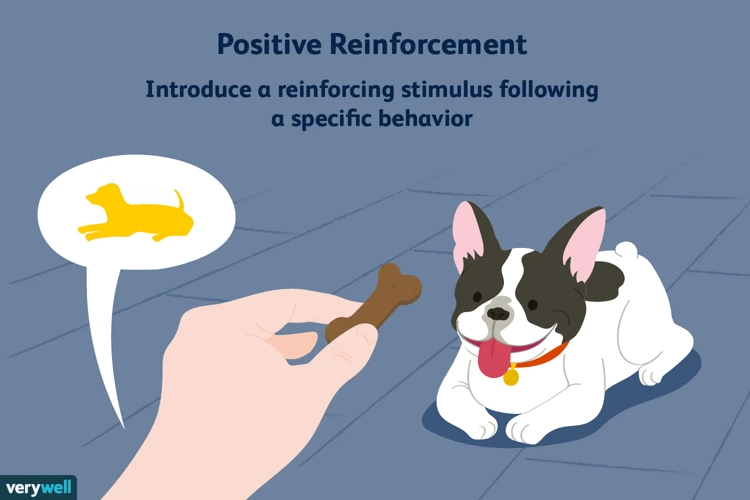
Now that you have set up your American Wirehair’s litter box and chosen the right litter, location, and box, it’s time to start on the actual litter training. One of the most effective and humane ways to train your cat is through positive reinforcement. By using encouragement rather than punishment, you can make litter training a more relaxing and enjoyable experience for both of you. Here are some tried and tested positive reinforcement techniques that you can use to train your American Wirehair with ease.
Use Treats
When it comes to litter training your American Wirehair, using treats as positive reinforcement can be highly effective in encouraging good behavior. By providing a reward for using the litter box properly, you are encouraging your cat to continue to do so in the future. However, it is important to use treats properly in order to avoid any negative consequences.
Choose the Right Treats
The first step in using treats for litter training is to choose the right kind of treats that your cat will respond to. Different cats have different preferences, so it may take some trial and error to find the right kind of treat that motivates your cat. Some popular options include small pieces of cooked chicken or fish, commercial cat treats, or even a small amount of canned cat food.
Use Treats Sparingly
While treats can be a highly effective tool for litter training, it is important to use them sparingly. Overuse of treats can lead to obesity and other health issues in your cat, so it is important to only provide treats as a reward for good behavior. It is also important to avoid using treats as a bribe, as this can lead to bad habits and negative behaviors in your cat.
Be Consistent
When using treats as positive reinforcement, it is important to be consistent in your approach. This means providing a treat every time your cat uses the litter box properly. Consistency will help your cat understand that using the litter box is the right behavior, and will encourage them to continue to do so in the future.
Take it Slow
If your cat is new to treats or is still learning how to use the litter box, it is important to take it slow. Start by providing a small treat every time your cat uses the litter box correctly. Over time, you can gradually decrease the frequency of treats until your cat is consistently using the litter box on their own.
| Do: | Don’t: |
|---|---|
| Choose the right kind of treats that your cat will respond to | Overuse treats, as this can lead to obesity and other health issues |
| Provide a treat every time your cat uses the litter box properly | Use treats as a bribe, as this can lead to bad habits and negative behaviors |
| Be consistent in your approach | Provide treats for any behavior other than using the litter box |
| Take it slow and gradually decrease the frequency of treats over time | Provide treats that are too large or unhealthy for your cat |
By using treats as positive reinforcement during litter training, you can encourage good behavior in your American Wirehair and create a strong bond between you and your pet. Just be sure to use treats properly and avoid overuse to ensure the best results.
Use Praise
When it comes to litter training your American Wirehair, it’s important to utilize positive reinforcement to encourage good behavior. One of the simplest and most effective methods of positive reinforcement is through praise. Praising your cat for using the litter box correctly will help to establish positive associations with the behavior and reinforce the desired outcome. Here are some tips for using praise effectively during litter training:
| Tip | Description |
|---|---|
| Be prompt | Make sure to praise your cat immediately after they use the litter box. This will help them to understand which behavior is being reinforced. |
| Be specific | When praising your cat, be sure to use specific language such as “good job using the litter box” or “I’m so proud of you for using the litter box”. This will help your cat to understand exactly what behavior is being rewarded. |
| Use treats or toys | Consider using treats or toys as a form of praise to make the experience more enjoyable for your cat. This will also help to establish positive associations with the litter box. |
| Stay consistent | Consistency is key when it comes to praising your cat during litter training. Make sure to praise them every time they use the litter box correctly to reinforce the behavior. |
Praising your cat during litter training is an important part of establishing good litter box habits. Remember to be prompt, specific, and consistent in your praise to reinforce the behavior and encourage your cat to continue using the litter box correctly. By utilizing this positive reinforcement technique, you’ll have a better chance of success in your litter training efforts.
Use Playtime
Playing with your American Wirehair is another great way to encourage them during litter training. Cats are naturally playful, so incorporating playtime into their litter training routine can significantly improve their learning experience. Here are some tips to help you use playtime as a positive reinforcement technique during litter training:
- Introduce toys: Introduce your American Wirehair to toys that they can play with during their litter training sessions. Interactive toys that allow you to play with your cat are highly recommended, like a fishing pole toy or a laser pointer. This helps to establish a positive association with their litter box and playtime when they are rewarded for going in the right place.
- Make it fun: While playing with your cat, gradually move your playtime sessions closer to their litter box each day. This will encourage your cat to see their litter box as a fun, safe, and enjoyable space. The more your cat associates their litter box with positive experiences, the more likely they are to use it for its intended purpose.
- Be patient: Every cat learns at their own pace, so it’s essential to be patient during this process. If your American Wirehair is not immediately responsive to playtime as a positive reinforcement, don’t be discouraged. Give them some time and continue to incorporate playtime into the training process. Your cat will eventually make a connection between the two and want to use the litter box.
- Track progress: Keep track of your cat’s progress with using their litter box during playtime. If they successfully use it during playtime, reward them with treats or affection right away. This will help them understand that using the litter box is a good behavior that leads to positive outcomes.
While using playtime as a positive reinforcement technique can be fun and effective, it’s important to remember that playtime shouldn’t be the only technique you use. It’s important to incorporate other techniques mentioned in this article, such as treats, praise, clicker training, and consistency. Using a combination of techniques will help ensure that your American Wirehair is successful in learning how to use their litter box.
Use Clicker Training
Positive reinforcement through the use of clicker training is a highly effective method for litter training your American Wirehair. Clicker training involves using a small device that makes a distinct clicking noise to signal to your cat that they have done something right. Here are some steps for implementing clicker training into your litter training routine:
- Step 1: Introduce your cat to the clicker by clicking it and then immediately offering a treat.
- Step 2: Repeat step one several times so that your cat associates the click with the reward.
- Step 3: Once your cat understands the association between the click and the reward, use the clicker to signal when they perform a desired behavior, such as entering the litter box.
- Step 4: Click as soon as your cat does the desired behavior and then give them a treat immediately afterwards.
- Step 5: Repeat this process consistently each time your cat enters the litter box, and gradually decrease the number of treats given as they begin to understand the behavior you are looking for.
Remember that clicker training is most effective when used in conjunction with other positive reinforcement techniques such as verbal praise and playtime. Consistency is key when using clicker training, so make sure to always have treats on hand and use the clicker immediately after your cat performs the desired behavior. By incorporating clicker training into your litter training routine, you can help your American Wirehair learn quickly and create a strong bond between you and your furry friend.
Use Consistency
Consistency is key when it comes to litter training your American Wirehair cat. Inconsistency can lead to confusion and slow down the learning process. To ensure that your cat is as successful as possible during litter training, consider implementing these consistency techniques.
1. Use the Same Litter Box: Consistently using the same litter box will help your cat associate that space with the need to eliminate waste. Choose one that is the appropriate size and placed in a location that is easy for your cat to access.
2. Use the Same Type of Litter: Cats have unique preferences when it comes to litter, and consistency in this area can help your cat feel more comfortable using the box. Experiment with different types of litter to find one that your American Wirehair cat likes and consistently use it.
3. Use the Same Location: Consistently placing the litter box in the same location will help your cat understand where it needs to go to use the bathroom. Choose a quiet, low-traffic area where your cat can have privacy.
4. Clean the Litter Box Regularly: The cleanliness of the litter box is important to cats. A dirty box may discourage your cat from using it. Plan to scoop waste daily and change the litter once a week.
5. Reward Consistent Behavior: When your cat consistently uses the litter box, reward the behavior with a special treat or extra playtime. This positive reinforcement will help cement the behavior in your cat’s mind.
To make it easier to maintain consistency in these areas, consider creating a schedule or checklist to follow. This can help ensure that you don’t miss any important tasks and that your cat has the best chance of quickly and successfully learning to use the litter box.
| Consistency Techniques: | Benefits: |
|---|---|
| Use the Same Litter Box | Helps your cat associate that space with the need to eliminate waste |
| Use the same Type of Litter | Can help your cat feel more comfortable using the box |
| Use the Same Location | Helps your cat understand where it needs to go to use the bathroom |
| Clean the Litter Box Regularly | A dirty box may discourage your cat from using it |
| Reward Consistent Behavior | Positive reinforcement will help cement the behavior in your cat’s mind |
Mistakes to Avoid

One of the most crucial aspects of successfully litter training your American Wirehair is avoiding common mistakes that can hinder the process. As a devoted cat owner, it’s natural to want to correct any negative behavior, but it’s important to understand that some methods can actually do more harm than good. To ensure that your furry companion learns to use the litter box effectively and with ease, it’s essential to steer clear of certain actions and approaches. Let’s explore some of the most common mistakes to avoid during litter training.
Punishing Your Cat
It may be tempting to punish your cat if they have accidents outside of their litter box during training, but this can be counterproductive and damaging to your relationship with your pet. Punishment can cause fear, stress, and anxiety in your American Wirehair, which can lead to more accidents and disobedience. Here are some reasons why you should not punish your cat during litter training:
| Reasons Not to Punish Your Cat |
| 1. Fear and Stress |
| Punishing your cat can cause them to be afraid of you and their litter box, which can increase their stress levels and lead to more accidents outside of the box. This can also result in other behavior issues, such as aggression or hiding. |
| 2. Negative Association with Litter Box |
| If your cat associates their litter box with punishment, they may avoid using it altogether. This can make litter training take even longer and cause frustration for both you and your pet. |
| 3. Difficulty Building Trust |
| Punishment can damage the trust you are trying to build with your cat during training. They may begin to see you as a threat rather than a trusted companion, which can have lasting effects on your relationship. |
Instead of punishment, focus on positive reinforcement techniques to encourage good litter box behavior and prevent accidents. This can include using treats, praise, and playtime to reward desired behavior, as well as consistency and clicker training. By using positive reinforcement techniques, you can build a stronger bond with your American Wirehair and ensure successful litter training.
Using the Wrong Litter
Choosing the right litter is crucial when litter training your American Wirehair. Using the wrong litter can lead to undesirable outcomes such as your cat avoiding the litter box or developing respiratory issues. Here are some common mistakes to avoid when choosing litter:
- Using scented litter: Scented litter may seem like a good option for keeping the litter box smelling fresh, but it can overpower your cat’s sensitive nose and cause them to avoid the box altogether. It’s best to stick to unscented litter.
- Choosing a texture your cat doesn’t like: Cats have preferences when it comes to litter texture. Some prefer a fine sand-like texture while others prefer larger pellets. Experiment with different textures to find what your cat prefers.
- Choosing non-clumping litter: Non-clumping litter can be messy and make cleaning the litter box more difficult. Stick to clumping litter for easier maintenance.
- Using inappropriate materials: Some cat owners try to cut costs by using materials like newspaper or sawdust as litter. However, these materials are not absorbent and will not do the job. Make sure to use proper cat litter for your cat.
By avoiding these mistakes, you can ensure that your American Wirehair has a positive litter training experience and a happy, healthy life.
Moving the Litter Box Too Soon
It’s important to give your American Wirehair enough time to get use to a designated litter box location before attempting to move it. Moving the litter box too soon can cause confusion and lead to accidents outside the box. When it’s time to move the litter box, do so gradually over a few days or weeks to allow your cat to adjust to the new location.
Here are some steps to help you move the litter box to a new location gradually:
| Steps | Details |
|---|---|
| Step 1 | Start by placing a second litter box in the new location and leave the original one in the old location for a few days |
| Step 2 | Observe if your cat is comfortable using the new litter box, if yes, gradually move the old litter box closer to the new one over a few days |
| Step 3 | Once the old litter box is next to the new one, leave it there for a few days to let your cat get used to using both boxes before removing the old box completely |
| Step 4 | Finally, remove the old litter box. If your cat is still having accidents in the old location, consider placing a towel or pee pad in that area until they get used to using the new location. |
Remember that cats are creatures of habit, so it’s important to be patient and take the time to help them adjust to the new location. Rushing the process can lead to stress, anxiety, and accidents. By following these gradual steps, you can help your American Wirehair feel comfortable and confident in the new litter box location without any issues.
Troubleshooting Tips
As much as we try to make litter training a smooth process, sometimes our American Wirehairs may run into some difficulties. Fortunately, there are ways to troubleshoot these issues and keep the training on track. Let’s explore some tips and tricks for troubleshooting litter training woes and maintaining a clean and comfortable environment for both you and your feline companion.
Gradually Increase Space
When you first bring your American Wirehair home, it’s best to start litter training in a designated small space. This could be a bathroom or a small room where your cat can feel safe and comfortable. Once your cat has mastered using the litter box in this small space, it’s time to gradually increase their living space.
1. Introduce More Space Slowly: Start by opening up the door to the small room and allowing your cat to explore the adjoining room. Gradually increase the space they have access to as they become more comfortable and confident. This could take a few hours or a few days, depending on your cat’s personality.
2. Add More Litter Boxes: As you increase the space your cat has access to, it’s important to add more litter boxes. The general rule is to have one litter box per cat plus one extra. This ensures that there is always a clean and accessible litter box for your cat to use.
3. Observe Your Cat: It’s important to pay attention to your cat’s behavior as you increase their living space. If you notice any accidents outside the litter box, it may be a sign that you’ve increased the space too quickly. Go back a step and limit their access until they’ve mastered using the litter box consistently.
4. Provide Positive Reinforcement: As always, positive reinforcement is key to successful litter training. As you increase your cat’s space, make sure to reward them with treats, praise, and playtime when they use the litter box correctly. This helps to reinforce the behavior and encourage your cat to continue using the litter box as they explore their new environment.
By gradually increasing the space your American Wirehair has access to, you can help them feel more comfortable and ultimately master litter training in their new home. Remember to stay patient and provide plenty of positive reinforcement along the way.
Clean Up Accidents Immediately
It’s important to clean up accidents immediately when litter training your American Wirehair. Accidents happen, especially in the early stages of training, but leaving them unattended can make it harder for your cat to learn where they should be going. In fact, if you leave an accident untouched, your cat may take it as a sign that this is an acceptable spot to go, and so they will continue to do so.
So, what should you do if your cat has an accident? Firstly, try to remain calm. Remember that litter training is a process that takes time and patience. Then, you should clean up the accident thoroughly. Use an enzyme-based cleaner to break down the proteins in the urine or feces and eliminate the smell. This will help eliminate any scent that might draw your cat back to the same spot.
To clean up an accident, you can use a cleaning solution made from items in your home, like White vinegar, hydrogen peroxide, and baking soda. An alternative is to use commercial enzymatic cleaner, which you spray or pour over the affected area and let it soak in for a few minutes. Then, blot the area with a clean cloth or paper towel. To avoid any stains or odors, make sure to let the area dry completely.
If your cat has an accident in the litter box, it’s still important to clean it up. Remove the soiled litter and replace it with fresh litter. Just be sure you don’t move the litter box if your cat is still getting used to it.
Remember that accidents will happen, but how you handle them can impact your cat’s litter training progress. Being diligent about cleaning up accidents immediately can help your cat learn more quickly where they should go to the bathroom.
Consider a Veterinarian Checkup
It’s always a good idea to have your American Wirehair checked out by a veterinarian to ensure there are no underlying medical issues that could be causing litter box problems. If your cat has suddenly stopped using the litter box or seems to be experiencing pain or discomfort while using it, a visit to the vet’s office may be necessary.
During the checkup, make sure to mention any changes in your cat’s behavior or litter box habits. The vet will likely perform a physical exam and may run some tests to rule out any problems such as urinary tract infections or bladder issues.
Here are a few things to keep in mind when considering a veterinarian checkup:
- Be sure to choose a vet who is experienced in working with cats, as they have unique health needs and require specialized care.
- Consider having your cat checked annually, even if they seem to be in good health, to catch any problems early.
- Don’t wait too long to make an appointment if you suspect your cat is experiencing health problems related to their litter box habits. The longer you wait, the worse the problem may become.
- Bringing a stool sample from your cat to the vet’s office can help determine if there are any underlying gastrointestinal issues that need to be addressed.
- Be honest and thorough when discussing your cat’s habits and behaviors with the vet. They may be able to provide helpful insights and tips for improving litter box success.
By taking steps to ensure your American Wirehair is in good health, you can help promote successful litter box usage and make your feline friend’s life more comfortable and enjoyable. Remember, a happy and healthy cat makes for a happy and healthy home!
Conclusion
After following the positive reinforcement techniques discussed in this article, your American Wirehair should now be well on their way to successful litter training. Remember to always use treats, praise, playtime, clicker training, and consistency when training your cat. By avoiding common mistakes like punishing your cat, using the wrong litter, and moving the litter box too soon, you will promote a positive training experience for both you and your furry friend.
Remember, if you do encounter any issues along the way, such as accidents outside of the litter box, gradually increasing your cat’s space, cleaning up accidents immediately, and considering a veterinarian checkup can help troubleshoot and address any underlying issues.
By using positive reinforcement techniques, you will not only be training your cat to use the litter box correctly but also strengthening the bond between you and your feline companion. With a well-trained cat, you can eliminate litter box related stress and enjoy a cleaner, healthier, and happier home environment that you and your American Wirehair both deserve. So start training your cat today and reap the rewards of a well-trained and loving pet.
Frequently Asked Questions
1. How long does it take to litter train an American Wirehair?
The time it takes to litter train your American Wirehair may vary, but typically it can take up to two weeks for them to understand the concept of using the litter box.
2. What type of litter box is best for American Wirehairs?
The ideal litter box for American Wirehairs is one that is large enough for them to move around in comfortably. They should have enough space to stand up, turn around, and scratch without making a mess.
3. How often should I change the litter in the litter box?
You should scoop out the litter at least once a day and change the entire box every one to two weeks, depending on how often your American Wirehair uses the box.
4. Should I punish my cat if they have an accident outside of the litter box?
No, you should never punish your cat if they have an accident outside of the litter box. This can cause fear and anxiety, which could lead to other behavioral issues.
5. Can I use multiple litter boxes for my American Wirehair?
Yes, you can use multiple litter boxes. In fact, having more than one litter box can encourage your American Wirehair to use the box consistently and reduce accidents.
6. How can I make the litter box more appealing to my American Wirehair?
You can make the litter box more appealing to your American Wirehair by placing it in a quiet and private location, using a litter they prefer, and regularly cleaning it to keep it fresh.
7. Is it necessary to use a clicker during litter training?
No, it is not necessary to use a clicker during litter training, but it can be a helpful tool to reinforce positive behavior and reward your American Wirehair for using the litter box.
8. What should I do if my American Wirehair continues to have accidents outside of the litter box?
If your American Wirehair continues to have accidents outside of the litter box, you may need to consult with your veterinarian to rule out any underlying health issues. You can also try adjusting the location or type of litter box, or using different litter to see if that helps.
9. Can I use scented litter for my American Wirehair?
While scented litter may be appealing to cat owners, it can be overwhelming for cats and discourage them from using the litter box. It is best to use unscented litter to avoid any issues.
10. How can I introduce a new litter box to my American Wirehair?
You can introduce a new litter box to your American Wirehair by placing it in the same location as the old one and gradually moving the old one away. You can also add a small amount of litter from the old box into the new one to make it more familiar.

